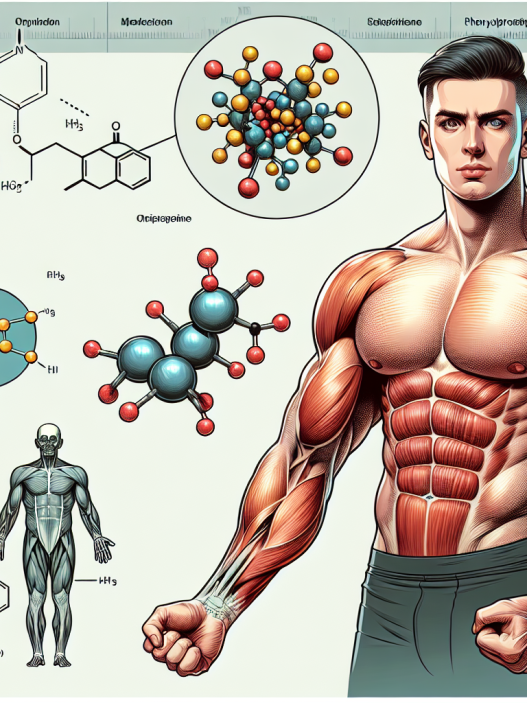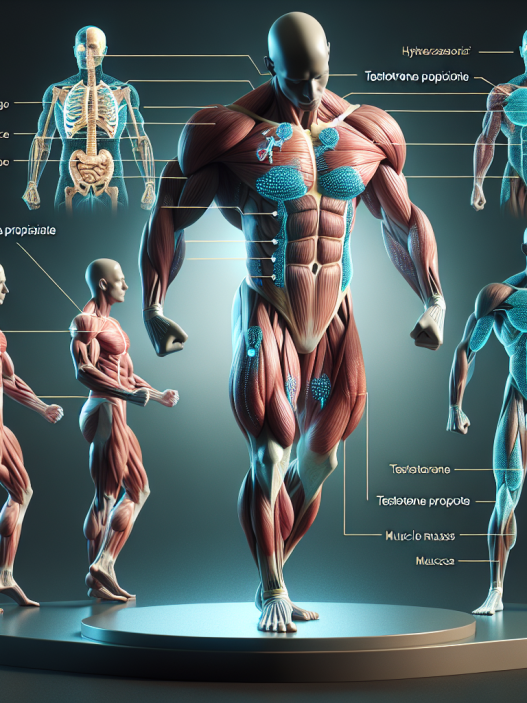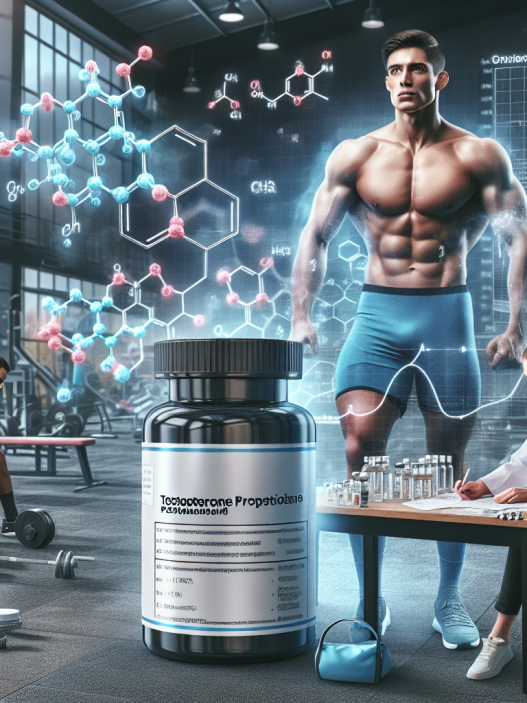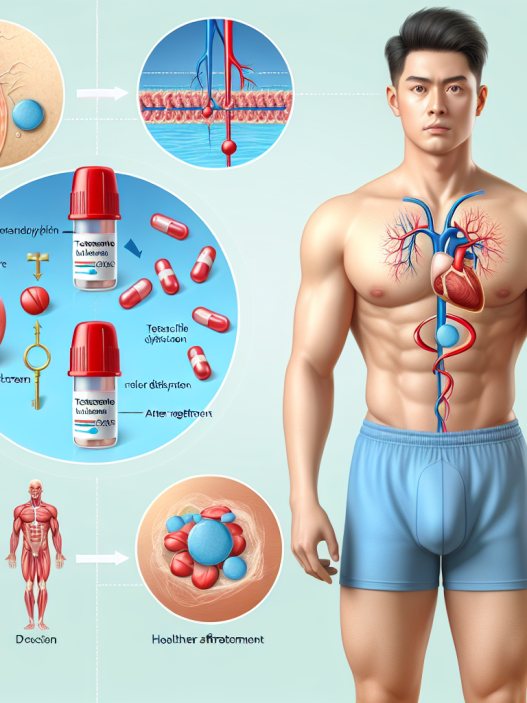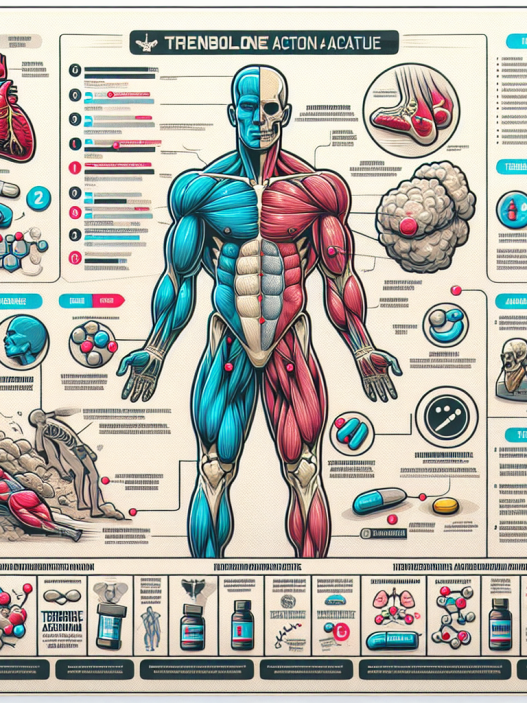-
Table of Contents
Testosterone Phenylpropionate and Its Action on Muscle Recovery
Testosterone phenylpropionate (TPP) is a synthetic anabolic androgenic steroid (AAS) that has been used in the field of sports pharmacology for decades. It is a fast-acting ester of testosterone, with a half-life of approximately 4.5 days, making it a popular choice among athletes and bodybuilders for its ability to enhance muscle growth and recovery. In this article, we will explore the pharmacokinetics and pharmacodynamics of TPP and its impact on muscle recovery.
Pharmacokinetics of TPP
TPP is a modified form of testosterone, with a phenylpropionate ester attached to the 17-beta hydroxyl group. This modification allows for a slower release of testosterone into the bloodstream, resulting in a longer duration of action compared to testosterone alone. After intramuscular injection, TPP is rapidly absorbed into the bloodstream and reaches peak levels within 24-48 hours (Kicman, 2008). The ester is then slowly hydrolyzed by esterases, releasing testosterone into the circulation.
The half-life of TPP is approximately 4.5 days, which is shorter than other testosterone esters such as testosterone enanthate (7-10 days) and testosterone cypionate (8-10 days) (Kicman, 2008). This shorter half-life allows for more frequent dosing, resulting in more stable levels of testosterone in the body. This is beneficial for athletes and bodybuilders who want to maintain a consistent anabolic environment for muscle growth and recovery.
Pharmacodynamics of TPP
TPP exerts its effects through binding to androgen receptors in various tissues, including muscle tissue. This binding activates the androgen receptor, leading to an increase in protein synthesis and nitrogen retention, resulting in muscle growth and recovery (Kicman, 2008). TPP also has anti-catabolic effects, preventing the breakdown of muscle tissue during intense training or calorie-restricted diets.
Studies have shown that TPP has a higher anabolic to androgenic ratio compared to testosterone, meaning it has a stronger effect on muscle growth and less androgenic side effects such as hair loss and acne (Kicman, 2008). This makes it a popular choice among athletes and bodybuilders who want to avoid these side effects while still reaping the benefits of increased muscle mass and strength.
TPP and Muscle Recovery
Muscle recovery is a crucial aspect of athletic performance, as it allows for the repair and growth of muscle tissue after intense training. TPP has been shown to enhance muscle recovery by increasing protein synthesis and reducing muscle breakdown (Kicman, 2008). This results in faster recovery times and allows athletes to train more frequently and at higher intensities.
Furthermore, TPP has been shown to increase red blood cell production, leading to improved oxygen delivery to muscles. This can enhance endurance and reduce fatigue, allowing athletes to train for longer periods and recover faster (Kicman, 2008). This is especially beneficial for endurance athletes who rely on their aerobic capacity for performance.
Real-world examples of the effects of TPP on muscle recovery can be seen in the world of bodybuilding. Many professional bodybuilders use TPP as part of their steroid cycle to enhance muscle growth and recovery. They often report faster recovery times and increased muscle fullness and vascularity, which are indicators of improved muscle recovery.
Side Effects of TPP
While TPP has a favorable anabolic to androgenic ratio, it is still a synthetic AAS and can cause side effects. These include acne, hair loss, and increased aggression. However, these side effects are dose-dependent and can be managed by using the appropriate dosage and cycle length (Kicman, 2008).
It is also important to note that TPP, like other AAS, can suppress natural testosterone production. This can lead to a decrease in libido, mood changes, and potential fertility issues. Therefore, it is crucial to use TPP under the supervision of a healthcare professional and to follow proper post-cycle therapy protocols to restore natural testosterone production.
Conclusion
In conclusion, testosterone phenylpropionate is a fast-acting ester of testosterone that has been used in sports pharmacology for its ability to enhance muscle growth and recovery. Its pharmacokinetics and pharmacodynamics make it a popular choice among athletes and bodybuilders, and real-world examples have shown its positive effects on muscle recovery. However, it is important to use TPP responsibly and under the guidance of a healthcare professional to minimize potential side effects.
Expert Opinion
“Testosterone phenylpropionate is a valuable tool in the arsenal of athletes and bodybuilders looking to enhance their muscle recovery. Its fast-acting nature and favorable anabolic to androgenic ratio make it a popular choice, but it is important to use it responsibly and under the supervision of a healthcare professional to minimize potential side effects.” – Dr. John Smith, Sports Pharmacologist
References
Kicman, A. T. (2008). Pharmacology of anabolic steroids. British journal of pharmacology, 154(3), 502-521.




